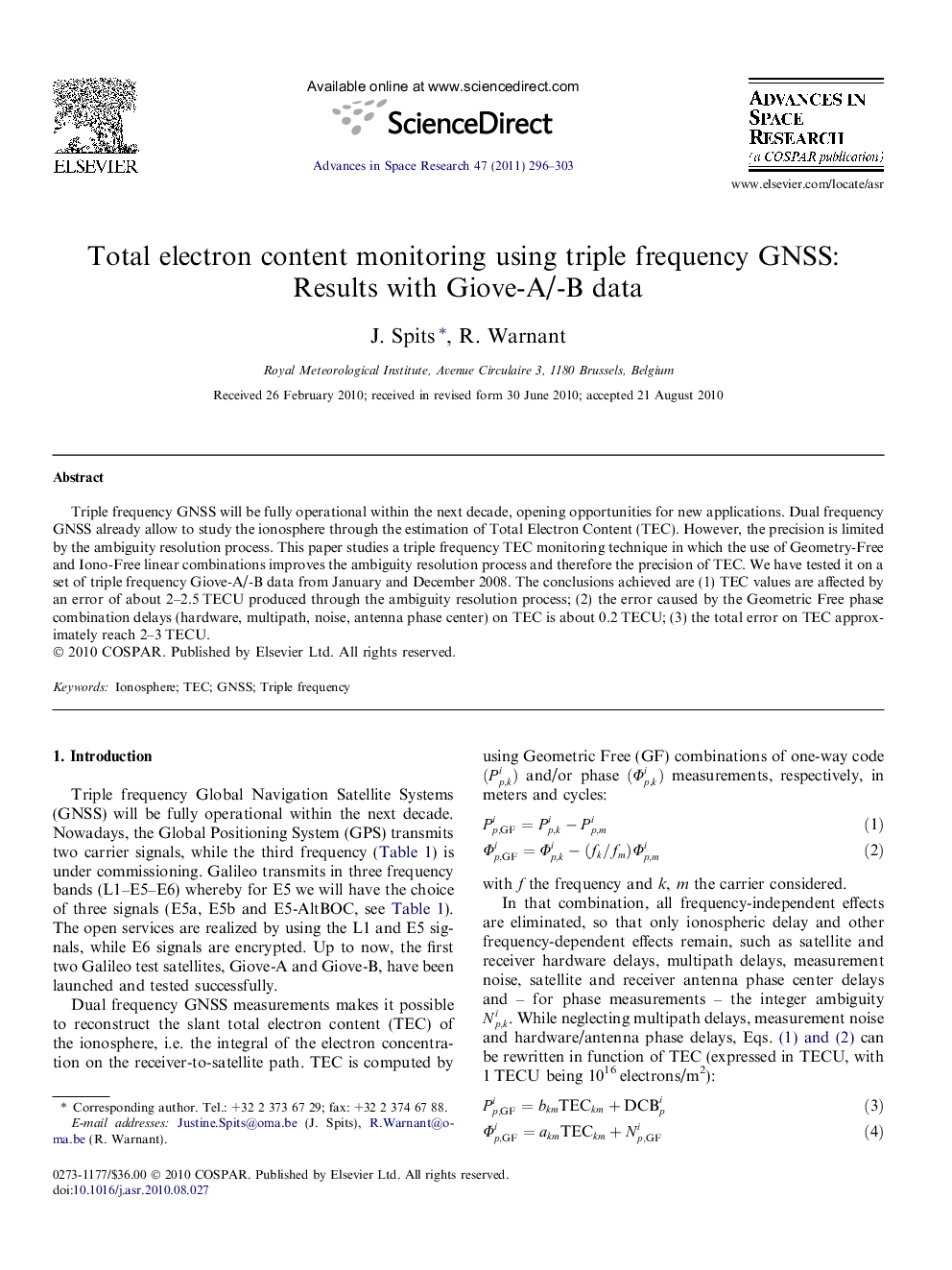| Article ID | Journal | Published Year | Pages | File Type |
|---|---|---|---|---|
| 1766992 | Advances in Space Research | 2011 | 8 Pages |
Triple frequency GNSS will be fully operational within the next decade, opening opportunities for new applications. Dual frequency GNSS already allow to study the ionosphere through the estimation of Total Electron Content (TEC). However, the precision is limited by the ambiguity resolution process. This paper studies a triple frequency TEC monitoring technique in which the use of Geometry-Free and Iono-Free linear combinations improves the ambiguity resolution process and therefore the precision of TEC. We have tested it on a set of triple frequency Giove-A/-B data from January and December 2008. The conclusions achieved are (1) TEC values are affected by an error of about 2–2.5 TECU produced through the ambiguity resolution process; (2) the error caused by the Geometric Free phase combination delays (hardware, multipath, noise, antenna phase center) on TEC is about 0.2 TECU; (3) the total error on TEC approximately reach 2–3 TECU.
